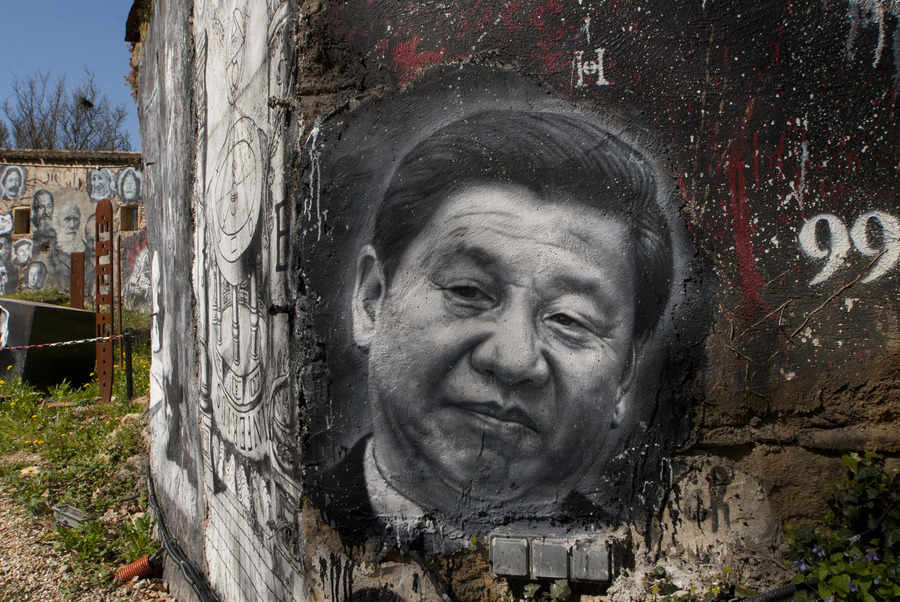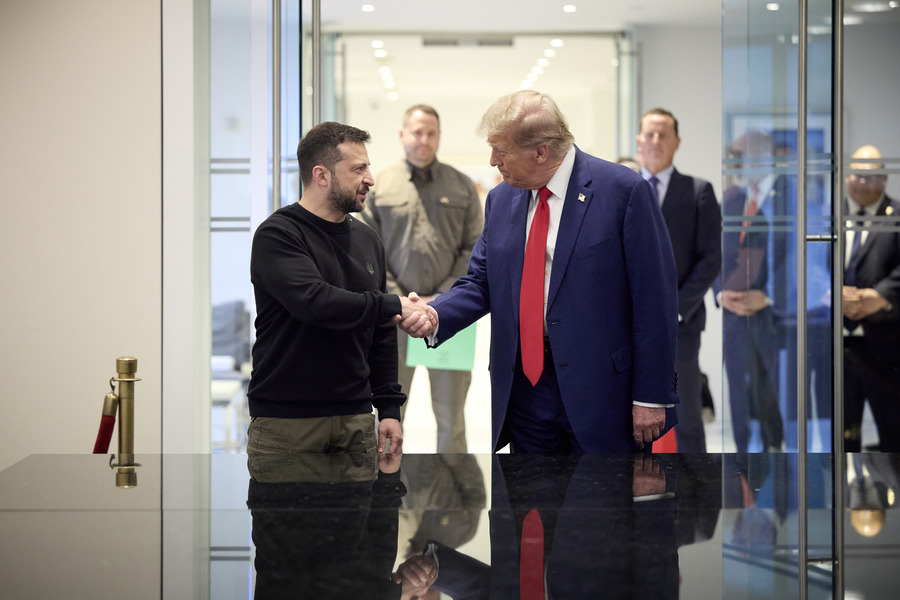Xi Jinping: The Man, the System, the Icon

Published by The Lawfare Institute
in Cooperation With

Who is Xi Jinping? Despite having risen to be arguably the most powerful man in the world, the general secretary of the Chinese Communist Party (CCP) remains a mysterious figure. Adding to recent efforts to better understand Xi-the-statesman through Xi-the-individual, Chun Han Wong’s “Party of One” presents an in-depth reconstruction of Xi’s upbringing and ascent to power. Through interviews and analysis of reportage, speeches, and academic sources, Wong revisits Xi’s origins as a way to explain his motives in driving the CCP’s recent political, economic, and military evolution. Drawing on a decade of journalistic experience in China, Wong’s book collates otherwise fragmented details about Xi’s life and career that are critical for anyone hoping to better understand the personality driving China’s political system.
Wong’s monograph emerges in part out of a drive to understand his own expulsion from the People’s Republic of China (PRC) after the CCP’s denial of visas to many foreign journalists, a move that “gutted the China bureaus of some of the most influential Western news organizations.” Wong sees the CCP’s purposeful erection of barriers to foreign inquiries in the context of the dueling phenomena of Xi’s increasing bravado about China’s destined resurgence and his insecurity about an outside world that “is increasingly regarded as hostile and belligerent.” Ironically, these restrictions, as Wong explains, have led the CCP to accuse non-Chinese commentators of failing to “understand” China, all while preventing those same commentators from researching China beyond the party’s curations.
Wong’s book concerns itself with understanding how the CCP, under Xi, has adapted the party to become synonymous not just with the state, but with the nation. In other words, how did the CCP, under Xi, come to represent all that is “China”? The result, like the CCP’s own tentacular extension into state and society, is a book that presents accessible and multivariant explanations for Xi’s reshaping of Chinese political and social life in his image. These explanations include Xi’s leveraging of his family’s legacy and connections, particularly those of his father, for personal and professional gain; his capacity to effectively replace informal norms of party governance in favor of personal rule; and his self-mythologizing as the champion of China’s teleological resurgence. This image extends beyond ensuring the party’s survivability into something far grander. As Wong puts it: “By portraying the party as an indispensable guarantor of China’s ascendancy over a fading West, Xi hopes to secure his own power, and entrench Communist rule for generations to come.” In explaining how Xi has become both system and icon in Chinese politics, Wong therefore underscores the importance of Xi’s transformative leadership for understanding China’s ultimate superpower ambitions.
Xi the Man
Xi’s upbringing was typical of boys with his family background. Paralleling China’s 20th-century history, his own story involves uncertainty, adapting to his family’s rapidly changing fortunes, and a career spent climbing the bureaucratic ranks from provincial to national government. Born in 1953 to parents of the “red” generation that shaped the early years of the CCP, Xi was privileged in his youth due to his family’s association with the party vanguard. As part of the first “post-revolutionary” generation of leaders—that is, party leaders who were born after the founding of the PRC—Xi relies on his background as an essential part of his claims to legitimacy within a system that espouses egalitarianism while privileging familial credentials and personal networks. Wong notes that much of Xi’s success comes from his early efforts to corral support from fellow offspring of other revolutionary leaders. These leaders, known as “princelings,” “believed the party must be led by born-red officials who would never renounce their revolutionary lineage.” Wong’s focus on Xi’s coming of age is therefore an important addition to the limited information available about his heritage.
Wong’s book excels in its summation of the multiple, but scattered, sources about Xi’s past. Xi’s opaque background, Wong argues, is “a mystery by design” that is malleable to shifting political fortunes and that “keeps the party elites on their toes, helping Xi maintain control.” As with many other autocrats, learning about Xi’s background therefore requires considerable sleuthing, often against the wishes of party elites who would rather have some details expunged. Despite this purposeful opacity, Xi’s background is important for understanding how he operates today. His formative years amid the tumultuous Cultural Revolution (1966-1976), where saying the wrong thing often had dramatic or deadly consequences, is where “his family’s misfortunes taught him the brutality of politics.” Xi, like many urban youths, was rusticated to the countryside for seven years in Shaanxi province, which Wong describes as a tough experience and “the most defining period of his life.” Indeed, the caution Xi learned from an upbringing amid episodic political violence would later jeopardize his career in the provincial government, when his unwillingness to be decisive for fear of isolating one faction over another led to notable policy mistakes.
Wong highlights the central role played by Xi’s father, Xi Zhongxun, a senior party cadre and member of a generation of officials whose own legitimacy stemmed from their participation in the party’s formative years. Unsurprisingly, given the party’s lip service to meritocracy over dynasties, “Xi has been circumspect about his father’s role in his career.” Wong depicts Xi’s father as the crucial player in Xi’s career progression, often intervening to secure Xi’s position or promotion and to avoid embarrassment for his son’s mistakes. In reconstructing Xi’s family relations, the book therefore highlights the centrality of personal and familial ties in climbing the rungs of the party, while underscoring the challenge of reconstructing these ties in the face of a political apparatus committed to denying the importance of anything but merit in the leader’s rise.
Xi the System
For Wong, Xi has managed to personalize rule to a far greater extent than his other post-Mao predecessors. The story he tells is about the unchecked imposition of Xi’s “micromanaging style” over the party and the party’s growing effectiveness in ensuring its dominance over Chinese society. As Wong argues, Xi appears intent on ensuring a “strong, interventionist state” through “top-down control,” with the top defined increasingly narrowly around Xi’s person.
This framing, however, raises the question of whether Xi’s story is principally one about individual thirst for power or centralization of party authority? In other words, has Xi’s consolidation of power resulted principally from his own efforts, or has it been a predictable outcome of incentives created by the party’s governing institutions?
Xi’s collapsing of distinctions between his personality and the party means that the PRC’s political system necessarily relies on him and his key enablers. Noting this tension, Wong correctly points to the continuing necessity of individual networks within such a system. These networks can collectively nudge systems toward outcomes favored by the leader. Xi’s use of personal connections as political insurance, a hallmark of autocratic systems where “law is a lever of state power, not a restraint,” has meant that he has elevated individuals with whom he had close personal ties. These included party elites, such as Wang Qishan, a “politically reliable” old acquaintance, and the former academic Wang Huning. Both men acted to secure Xi’s primacy in the party by bending institutions to support Xi’s ambitions.
For a system constructed around ensuring the primacy of one leader, the individual matters far more to systemic perpetuation than the CCP might want to admit. Indeed, individuals continue to play important roles not only in ensuring the continuation in power of current political leaders, but also in serving as scapegoats when the system fails. In the case of Xi’s sweeping anti-corruption campaign, a signature policy launched in 2012 that sweeps up political enemies as much as malfeasance, the campaign ultimately serves to “reinforc[e] the party’s claims that corruption stems from individual degeneracy rather than systemic flaws.”
This emphasis on the persisting reliance on the individual further suggests that a Xi substitute would likely have been less able to achieve the same system-wide overhaul as Xi’s personal connections and credentials allowed. It also points to a fundamental need for the system both to eradicate the threat of individual deviance and to elevate its most important individual beyond the status of a mere political leader to something far loftier.
Xi the Icon
Perhaps Xi’s greatest achievement in office has been his transformation from the latest baton holder in a succession of post-Mao leaders into the undisputed leader not just of the party but perhaps more importantly of China’s “teleological path to greatness.” As Wong convincingly argues, “[M]ythmaking is a key component of Xi’s push for preeminence.” This mythmaking, part of a historical revisionism that situates the CCP and Xi’s elevation within a linear, multi-century trajectory from humiliation to global supremacy, helps explain the importance that Xi appears to place on both national history and personal legacy. It also points to the party’s promotion of Xi as an icon that stands for far more than one man or one leader.
The lessons that Xi draws from China’s history combine his formative experiences in the Mao and Deng eras. Favoring a more Mao-style personal rule, Xi has rejected the Dengist pivot toward collective leadership in favor of centralizing power in one individual, even while the party praises Deng’s legacy. Pointing to Xi’s lessons from childhood through to his experiences with the pro-democracy Umbrella Movement in Hong Kong, Wong fuses Xi’s personal encounters with a belief that instability cannot unseat China’s inevitable reclamation as world leader. History, legacy, and zero tolerance for defiance at whatever scale or format, according to Wong, calcify in Xi’s vision for the country, the party, and his own ascendency.
Wong’s book is less clear about whether Xi’s near deification was always Xi’s own intent or whether it emerged as a goal over time as he eliminated opposition. Like the bureaucracy that surrounds him, Wong’s analysis of Xi often sees him in multiple frames. He is a boring bureaucrat who, more out of contingency than strategy, “exploited good fortune to carve a path to power”; a “savvy streetfighter” capable of strategizing his way to the top; and an ideologue set on “pairing ancient tradition with Leninist hardware” that is “peculiar to the party’s Leninist structure and revolutionary roots.” Since becoming general secretary, Xi has leveraged administrative and legal means to consolidate his power, notably in assuming “personal authority over China’s security forces” as a form of coup-proofing his position. It remains unclear, however, the extent to which these moves were premeditated or opportunistic.
It is perhaps ironic, then, that in creating a massive political apparatus with himself as the keystone, Xi, much like the architects of the Death Star, may have inadvertently designed a seemingly indestructible but fundamentally flawed structure. As Wong argues: “By remaking the party around himself, Xi may have become the weakest link in his quest to build a Chinese superpower.” While Xi appears likely to stay in his position for the foreseeable future, well beyond the limitations that Deng envisioned for party leaders, the depth of the system’s reliance on one man means that the prospect of his eventual departure raises almost existential uncertainty for the party’s realizing of its China Dream.
Telling Good China Stories
Wong notes that the “true source of the party’s power” is “its stories.” Wong’s offering of alternative “stories” about China presents perhaps the most powerful rejoinder to Xi’s “all-encompassing struggle to shape China’s collective consciousness.” Wong’s book, for example, is strongest in its vignettes of how individuals navigate shifting definitions of acceptability or permission in Xi’s China. These insights into private lives, which draw on Wong’s journalistic experience, humanize a country that is often portrayed in faceless and sweeping terms. Through these stories, pessimism about China’s future mixes with evidence of micro-defiance as individuals sustain their voices against the state’s enforcement of social conformity.
Indeed, the shift in tone as the book moves among reportage, scholarship, and interview speaks to a broader question of how to pitch a book with an increasingly broad appeal across academia, journalism, business, and government. Wong’s neat explanations for a variety of complex topics mean that each of his intended audiences will benefit from reading his account, even if their takeaways differ. It speaks to Wong’s skill as a writer that he addresses these different readerships with ease, a feat that many academics might well try to emulate.
The balance between these vignettes and broader analysis, however, leads at times to simplification that belies deeper complexity. The book’s select engagement with academic scholarship, for example, often cherry picks papers that are themselves part of broader contested debates. The book also occasionally favors sweeping historical narratives—for example, on the evolution of state bureaucracy from the Qin dynasty (221 BC-206 BC) to the contemporary era within two pages—that draw questionable causal connections between historical practices or ideas and present ones and inadvertently reinforce Xi’s own claims that he is the inheritor of an ancient mantle. Wong is more effective in discussing historical events when he ties them directly to Xi’s own understanding of history as an informant on contemporary policymaking and as part of his “teleological path to greatness.”
The organization of the book into thematic chapters is effective in providing introductions to each facet of Xi’s leadership but can prove confusing at times for those hoping for a clearer chronology. The division of chapters into subsections—for example, the division of chapter 3 on “Law Is Order” into sections on rule of/by law, instilling order post-Mao, securitization of Chinese society, surveillance in Xinjiang, responses to COVID-19, and clampdowns on expressions of dissent—makes for an occasionally choppy approach compared to a more linear explanation of Xi’s trajectory.
Despite these drawbacks, Wong fulfills his ambitions to write an analytical but accessible book that centers Xi within the dynamic structures of China’s party and state apparatuses. Whether explaining Xi the man, the system, or the icon, this is a book that will be important reading for understanding China’s leader and the trajectory of the country that will arguably define the 21st century.





